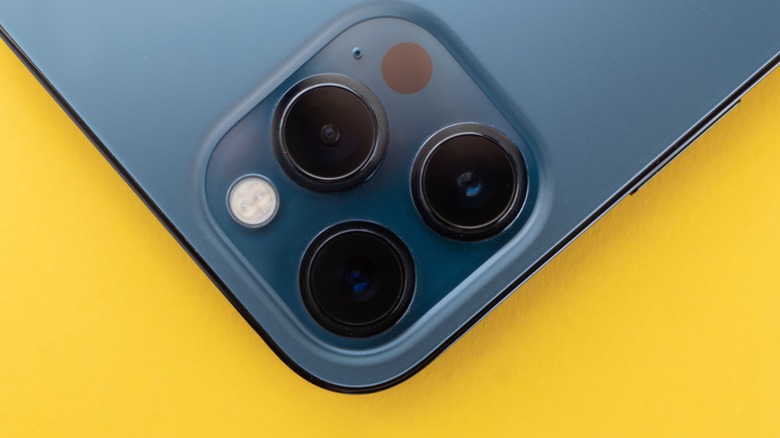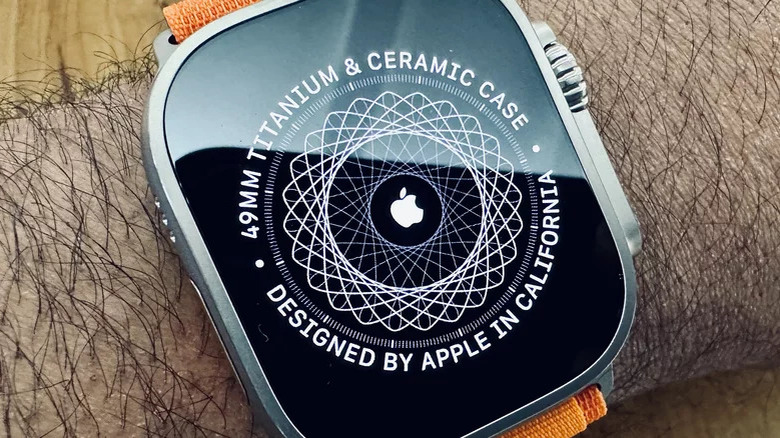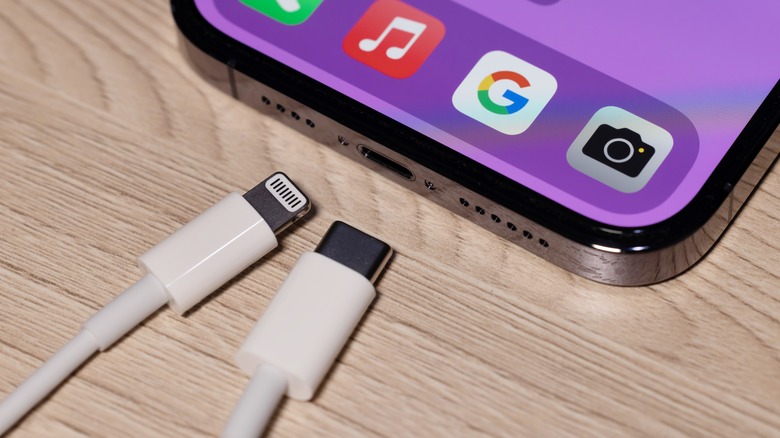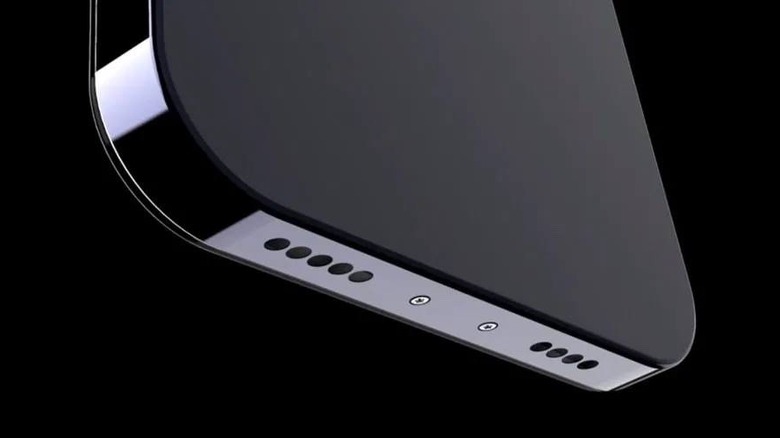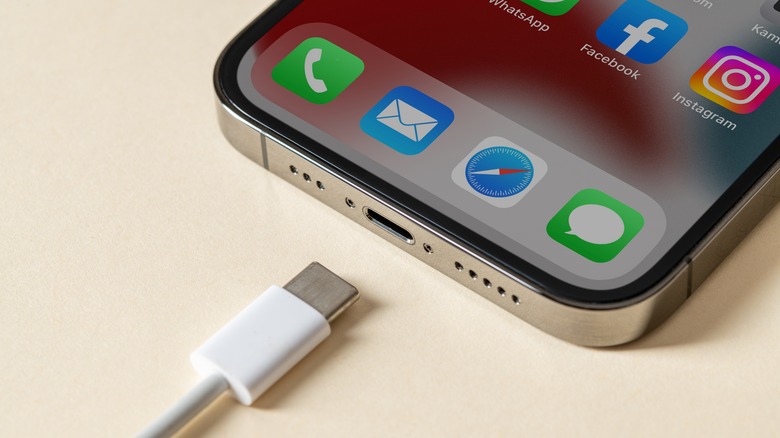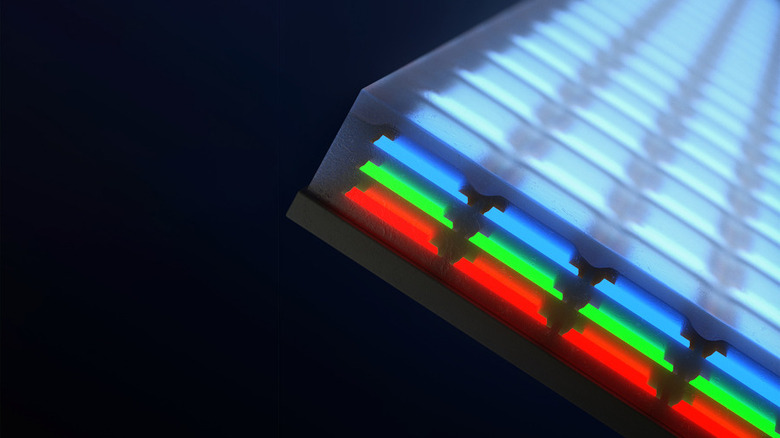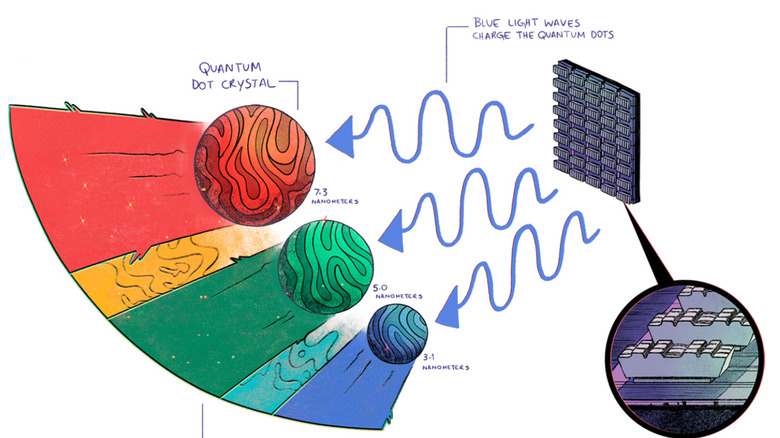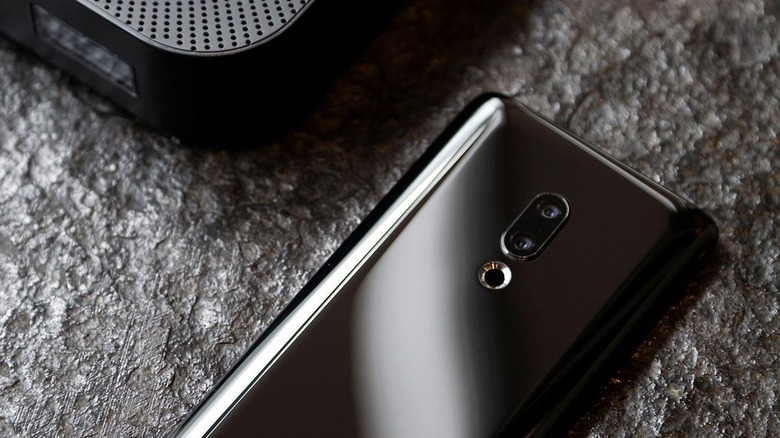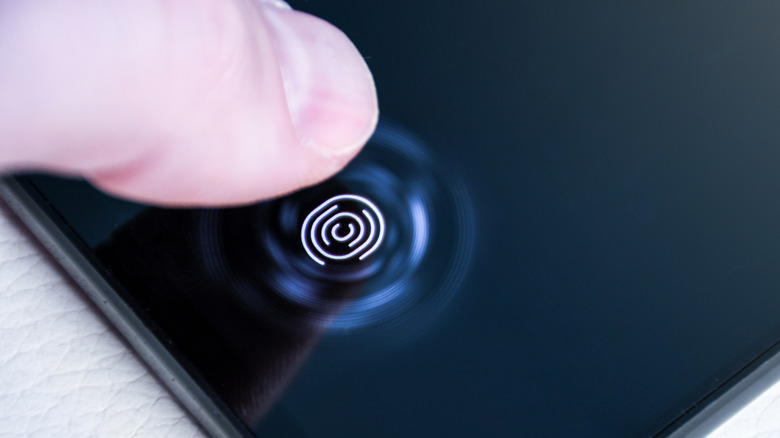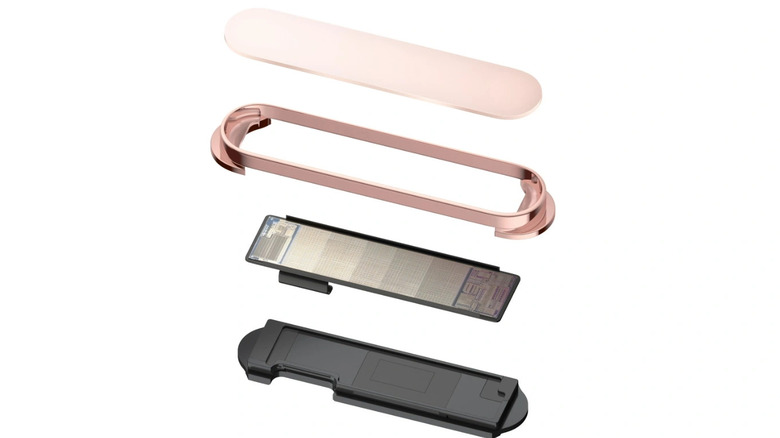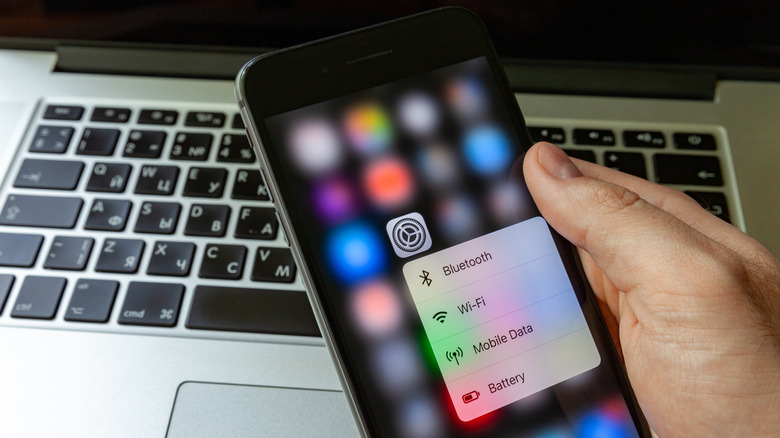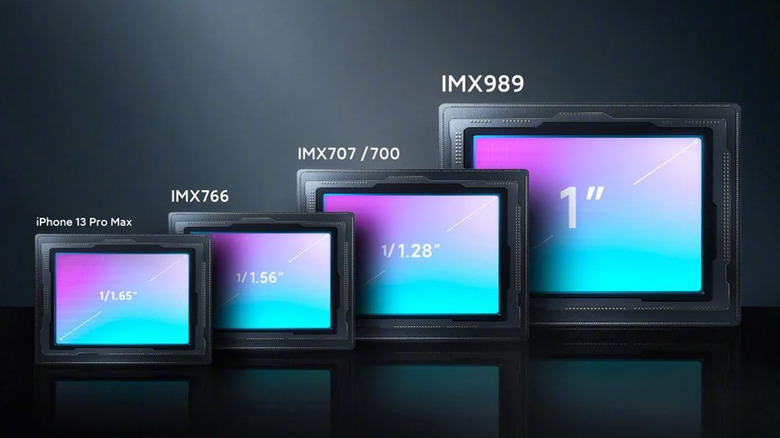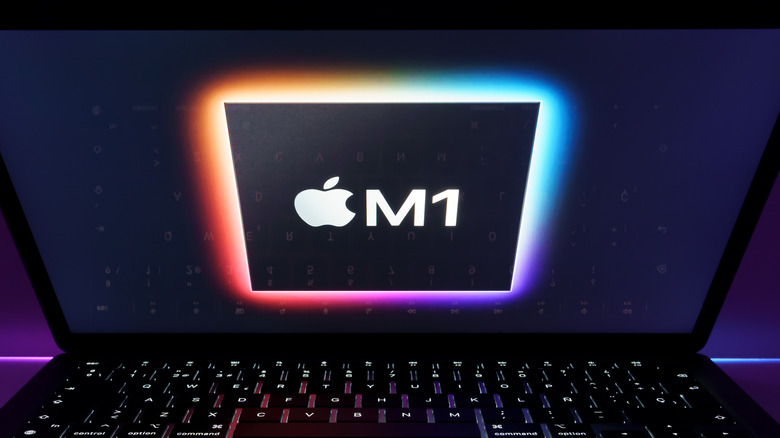Features We'd Love To See In An iPhone Ultra
If the recent leaks and rumors are accurate, Apple is working on bringing an iPhone Ultra to the range as a premium device with every technological advance it can fit inside. It won't replace any of the existing iPhone models. Instead, it will sit atop of the iPhone range, mirroring how the Apple Watch Ultra commands the best technology from the Apple Watch range. That will undoubtedly cost more than the iPhone models and should have new features and hardware that can't be found on any other device.
Apple knows its brand carries a steep premium, and fans are typically willing pay more for additional capabilities. The iPhone 14 Pro and iPhone 14 Pro Max were hard to get hold of between high demand and low production numbers. Now, the market is ripe for a more premium iPhone, if Apple can strike the right balance between cost and meeting expectations. We've read all the rumors about the iPhone Ultra, and we've got some thoughts on them, and on what other premium features Apple could offer to coax the money from our wallets.
Titanium body
Apple Watch Ultra uses titanium to differentiate it from the stainless steel on the high-end Apple Watch Series 8. Rumors have long swirled about titanium coming to the iPhone Pro range, but it makes more sense for Apple to follow the precedent set by the Apple Watch Ultra by bringing it to the iPhone Ultra first. That would create a three-tier system for the iPhone chassis designs. The base model would use aluminum, the iPhone Pro models use stainless steel, and the iPhone Ultra would use titanium.
Thanks to Patently Apple, a rumor uncovered at the tail end of 2021 mentioned that "high-end iPhones in 2022 will use a titanium alloy." That prediction was made by JP Morgan Chase, which thought the iPhone 14 would be the range where a third iPhone chassis material would appear. Patents issued to Apple between 2017 and 2021 mention titanium alloys, some with anti-fingerprint coatings. We can't wait to see if the iPhone Ultra will sport a titanium frame that isn't a fingerprint magnet.
USB-C
Apple will have to use USB-C starting in 2024, because of an E.U. mandate for a standard charging port, which was necessary after the European Commission's efforts for a voluntary consensus failed. While the commission didn't explicitly call out Apple, it's been the main hold-out on the switch to USB-C, preferring to stick with the MFi-certified Lightning connector and accessories.
We'd suggest Apple go further and use USB4-stroke-TB4 as the speed of the port. USB-C only qualifies the connector type, not the data transfer speeds or power handling requirements (although the E.U. has a mandate for the power handling minimums as well). That could mean 20 Gbps transfer speeds from USB 4 or up to 40Gbps transfer speeds if Apple supports the full USB 4 spec and Thunderbolt 4. Data transfer is only one part of the equation here. Moving to USB 4 enables Apple to bring more features to the iPhone Ultra like external monitor use as on the iPad Pro, a more comprehensive range of peripherals, 10 Gbe Ethernet via an adapter, and faster charging speeds.
Or no ports at all
Could the iPhone Ultra have no ports at all? Current wireless transfer speeds are high enough to supplant an iPhone's wired transfer speeds. Wi-Fi 7 will likely be out by the time the iPhone Ultra arrives, and we expect Apple to spare no specification on its flagship of flagship devices. Demonstrations of Wi-Fi 7 show a data speed of 5Gbps, comparable to USB 3.1 Gen 1. That's still faster than the USB 2.0 speeds supported by most Lightning connector-equipped Apple devices, and it's the same speed as Lightning-equipped iPad Pro devices.
Apple removed the SIM tray on U.S. iPhone 14 models, eliminating one ingress for water and dirt. It could delete the Lightning port and further increase its weatherproofing. We saw a glimpse of a portless, buttonless smartphone in 2019's Meizu Zero. Imagine that on an iPhone, with MagSafe wireless charging, wireless data transfer, eSIM, and only a few small holes for the microphones and speakers.
Fast charging
The iPhone needs to catch up in charging speeds. The current iPhone 14 tops out at 20W fast charging via Lightning, with the iPhone 14 Pro charging slightly faster at 27W, and MagSafe wireless chargers can recharge up to 15W. Any Qi-compatible or MagSafe-compatible chargers can only charge at 7.5W, which is slow compared to the rest of the smartphone industry. When you look at Apple's biggest competitor, Samsung, the Galaxy S23 charges at 25W, with the Galaxy S23 Ultra boasting a 45W charging speed.
That's impressive, but it pales in comparison to what other Android smartphone makers are packing into their devices. OnePlus has a 150W fast charger, using its SuperVOOC charging standard. Xiaomi's sub-brand, Redmi, has a phone with a 210W charger that hits full power in less than nine minutes. These devices use the same lithium-ion batteries that Apple uses with the iPhone. Apple's Battery Health feature can keep an eye out for damaging effects while bringing faster charging speeds to the iPhone Ultra.
MicroLED screen
Apple has been working on MicroLED screens for years, with the Apple Watch slated to be the first to use the new screen technology. That's one option, but Apple has a history of bringing significant advancements to its premium range first. That's usually the iPhone Pro models, but if Apple adds a third, higher tier, the iPhone Ultra would be the perfect device to inject MicroLED.
Everything Apple puts in the iPhone Ultra would have to be better than the other two ranges. It could use OLED with ProMotion, but that doesn't differentiate it from the Pro model. MicroLED would, by bringing burn-in-free, self-emissive pixels to the pocketable iPhone screen. It's a better technology than MiniLED, the other premium screen technology that Apple uses in its iPad Pro and MacBook Pro ranges. Because it has no backlight, it can perfectly dim any pixel on the screen. It can be brighter than OLED or even LCD technologies. And it has the potential to be more energy efficient than OLED, perfect for longer battery life on your iPhone. MIT recently developed a way of stacking the RGB MicroLED pixels instead of putting them side-by-side. Apple could use this method to supercharge its iPhone Ultra screen to have up to 5,000 pixels per inch, over 10 times the PPI of the existing iPhone 14 Pro.
QD-OLED screen
If MicroLED isn't ready, or Apple decides it's only going in the Apple Watch, it could add QD-OLED to the iPhone Ultra. The quantum dot-equipped OLED panels come with multiple advantages over the OLED that existing iPhones use. It has a wider color gamut thanks to how well quantum dots reemit energy when excited. The OLED light-emitting layer uses only blue pixels, which give off the highest light energy. Because of that, QD-OLED panels can be brighter than OLED.
The structure of QD-OLED also lends itself well to smartphone screens. The technology has excellent viewing angles, low distortion, color shift, or other unwanted effects at off-axis viewing. It's better at HDR reproduction, as the relative contrast ratio is up to 1,000,000:1. Samsung is one of the leading producers of QD-OLED, and its panels are designed to minimize the reflection of light. That means an iPhone Ultra with QD-OLED would be easier to read even in bright sunlight, from the combination of a more luminous panel and light-rejecting structure.
Non-physical buttons
Rumors about removing the physical buttons for power and volume have been around for years. An iPhone Ultra model would showcase everything Apple can design, and removing the physical buttons would fit the bill. These could be capacitative, ultrasonic, or some combination. Apple has been content with iterative updates to the iPhone design in recent years. An ultra-premium Ultra model would present an opportunity to do something spectacular and move the iPhone design language forward.
It would be groundbreaking if Apple smoothed off the alleged titanium edges of the frame to showcase a buttonless future. Yes, the Meizu device we mentioned earlier was technically the first buttonless smartphone, but it was only a prototype and never made it to market. Removing the physical buttons also improves the strength of the chassis, which would avoid a Bendgate situation. One of the more prolific and typically accurate Apple analysts, Ming-Chi Kuo, has said that Apple's premium iPhones in 2023 could be buttonless. His best guess was solid-state pressure-sensitive buttons with Taptic Engine vibration motors to provide physical feedback when used.
Under-screen fingerprint reader
Flagship devices from Android manufacturers use under-screen fingerprint readers for biometric purposes. While Face ID is the best facial recognition system on consumer devices, the return of Touch ID would be welcome. After all, MacBooks, iPads, and Mac keyboards all have Touch ID integrated, and there is no reason it shouldn't have a home on the iPhone Ultra. The last few years of mask-wearing have shown that Face ID isn't infallible, even if it can now work while masked.
Apple's other solution for avoiding Face ID is using an Apple Watch to unlock your iPhone. That has its own issues, not the least of which is needing to spend hundreds of dollars to quickly unlock your device. Apple has been working on under-screen fingerprint sensors, and the iPhone Ultra would be a highly appropriate device to offer a new sensor to the iPhone range. It would work in conjunction with Face ID, so owners could use the most appropriate biometric method for their situations.
Touch ID on the power button
If Apple thinks that ultrasonic under-screen fingerprint readers are still too inaccurate, they could try one in the frame of the iPhone Ultra where the power button is. That's where Touch ID lives on the iPad Air (4th generation) and later and iPad mini (6th generation). It's a technological achievement to put a full fingerprint sensor into the power button, and it can be made even smaller to fit the side profile of an iPhone. We'd love the choice between using Face ID and Touch ID on an iPhone Ultra, putting the best two biometric security methods into one device.
Apple has a patent for bringing Touch ID to the power button of an iPhone. The cumbersomely titled "Devices, Methods, and Graphical User Interfaces for Providing A Home Button Replacement" was granted in 2018. The images the patent contains show an iPhone with the power button doubling as a fingerprint sensor. The patent also says the button could sense if a finger was hovering over it, but not touching. That could be used to partially wake the iPhone up before you unlock it, giving a faster user experience once Touch ID is activated.
The return of 3D Touch
Bringing 3D Touch back to the iPhone range on the Ultra model would be an easy win for Apple. Some users really liked 3D Touch, with its ability to get menus and multitask by varying the pressure of our touches. We once thought the technology was "doomed from the start," but perhaps it was simply too advanced for its time. Now it could flourish. When 3D Touch first came out, the main issue was that it had no standardized ruleset. Developers could use it where they wanted or avoid using it altogether. Apple isn't likely to make the same mistake again, and any resurgence of the pressure-sensitive technology would come with a tightly-scripted set of rules for its use.
3D Touch survived longer on the Apple Watch until it was removed in watchOS 7 and the Apple Watch Series 6. It made more sense on the smaller screen as a second reminder of touch interactions. That physical reminder still lives on in the MacBook touchpad, making it easier to navigate macOS without looking down. It could still make sense if Apple uses non-physical side buttons on the Ultra. We'd also like the ability to use the iPhone Ultra as a wireless touchpad for the Mac, with the same physical feedback. It could then be used as a presentation controller, giving more functionality than the standard iPhone.
A larger image sensor
Sony makes the most of the sensors used in smartphone cameras, including those that Apple uses in the iPhone. That was confirmed in December 2022 by CEO Tim Cook, who was in Japan visiting Sony's camera sensor facility in Kumamoto. The image tweeted by Cook showed him looking at two iPhone models, one with two camera lenses and one with three. That's the current range of iPhone 14 and iPhone 14 Pro devices, the latest in the decade-long partnership between the two companies.
We'd love to see the iPhone Ultra supersize to the Sony IMX989 1-inch sensor or even a larger one coming down the pipe from Sony's sensor division. The IMX989 is used in flagship Android devices like Xiaomi's 12S, and it's a 50-megapixel sensor with a 23mm equivalent focal length and f1.9 aperture. A recent report from Nikkei talks about a "state-of-the-art image sensor" that Sony Group will be supplying to Apple to use in iPhones. The report doesn't mention the megapixels of this new sensor but talks about it being able to capture more light from each pixel compared to existing technology. Better low-light performance would undoubtedly be welcome on an iPhone Ultra, maybe alongside an optical zoom periscope lens for crystal clear zoom.
A desktop-class chip
Apple already puts its desktop-class M-chips into several iPad models, including the latest iPad Pro. Why not put them into the iPhone Ultra and make it the most powerful chip put into a smartphone? Efficiency might be an issue with the smaller battery size able to fit into an iPhone chassis. Still, Apple could offset this by limiting core frequency or the thermal envelope that the chip can work in. Imagine every Apple device using a common core built around the capable M-chips. That would make it easier for third-party developers and Apple's software team.
It would bring desktop power to the pocket-sized iPhone, enabling creative work to be done anywhere. Video editing with DaVinci Resolve, just like you would on an iPad. Apple could go further, enabling the Apple Pencil to work with the iPhone. That would be just the thing to put the iPhone Ultra head-to-head with Samsung's Galaxy Ultra models, which replaced the Galaxy Note as the only smartphone with the stowable S Pen.
